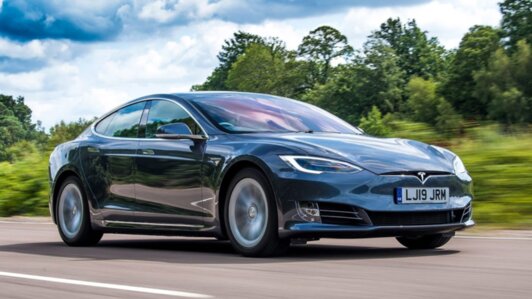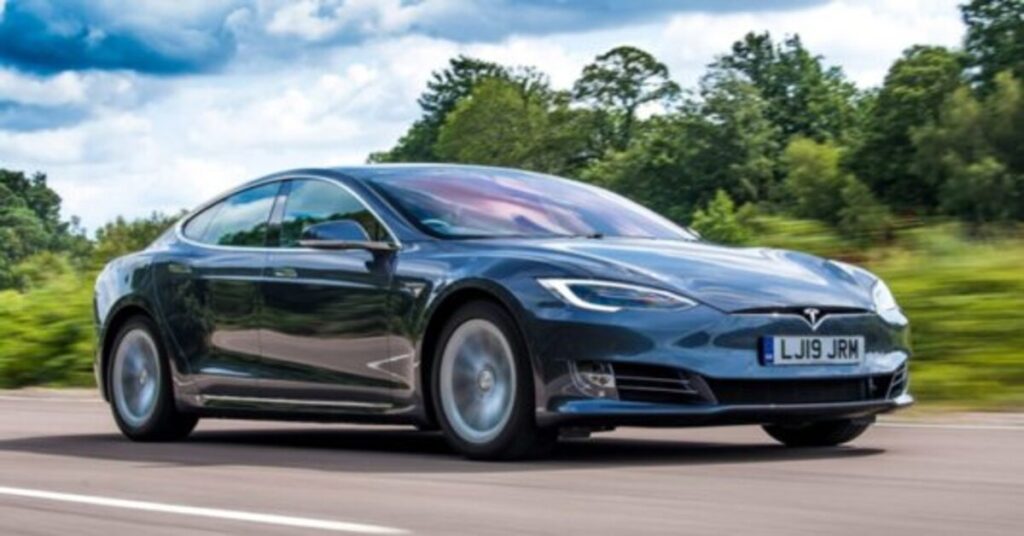
Tesla is one of the renowned automakers in the field of battery technology. No one can beat the car of Tesla in terms of the Tesla battery and their range. The Tesla Model S is one of the ultimate cars. So, do you know about the Tesla Model S battery configuration?
Tesla Model S Battery Configuration is known for its quick acceleration, dazzling speed, and longer range, and all the credit for the Tesla Model 3 goes to the Tesla Model 3 battery configuration. Tesla Model S majorly focuses on the battery system to enhance the power and performance of the EV.
Tesla Model S is packed with a highly modular battery pack which has high efficiency, reliability, and safety features. The battery pack of the Tesla Model 3 combined 16 modules connected in a series. The Tesla battery pack raises a voltage of around 400V.
This is the very first single and most heavy component of the battery which is included in the Tesla Model 3. However, different cars have different battery packs which results in variations in battery weight and capacity.
The Tesla Model S plaid version has a battery pack of 90 kWh and weighs over 530 kg. The battery contains total modules of 16 which have variations like 7104, and 18650 cells. The battery is connected to a central bar which feeds both the rear and front electric motor.
Later, in the article we’ll be discussing the battery configuration of the Tesla Model S. We’ll discuss the battery pack of the Tesla Model S and majorly focus on the topic such as mechanical and thermal specifications of the Tesla Model S battery. We’ll dive deeper into the knowledge of electrical features, characteristics, cell modules, and efficiency of the Tesla Model S battery.
What Is An EVs Battery System?
A battery system in Evs is one of the major sources of energy which makes the motor move and accelerate the car. The main constituents of the EVs battery are its cells. The designing of the electric car battery needs specialization in electrical, mechanical, and thermal engineering.
Tesla Model S Battery Pack Specification
Tesla Model S is packed with a highly modular battery and possesses high efficiency, reliability, and safety. The battery rise a volt of around 400V and making it one of the most powerful batteries in the Tesla world. No manufacturers are including these types of enhanced battery packs in their EVs.
The battery is designed with 16 modules connected together in a series. The overall weight of the battery is around 530 kg.
The battery pack of the Tesla Model S is combined with multiple cells arranged together in a series to form a battery pack. All the cells have different shapes and sizes depending upon the efficiency and performance of the battery. Different batteries and cells possess different internal chemistry. As you all know the battery pack of Tesla Model 3 is a collection of lithium-ion cells.
So, each module of the Tesla battery pack is made of multiple battery modules by the combination of lithium-ion cells connected in a series or parallel arrangement. The parallel and series connection of the battery module defines the efficiency of the Tesla Model s battery. The division of the Tesla Model S battery pack is highlighted below.
Battery pack>Battery Modules> Cells
Tesla Model S: 18650 cells
If you are not aware of the major supplier of batteries to Tesla. Let me tell you Panasonic Energy is one of the major suppliers of batteries, especially for the Tesla Model S and Model X variants of cars. The number of cells used in the Tesla Model S is 18650 cells. The cells of the Tesla Model S are cylindrical in shape and have a diameter of around 18mm with 65mm in height.
Different types of Tesla Model used different types of cells which are highlighted in the Table below.
| EVs | Cell Dimension |
| Tesla Model S | 18650 |
| Tesla Model 3 | 2170 |
| Tesla Model X | 18650 |
| Tesla Model Y | 2170 |
Tesla Model S Battery Configuration with Its Module
The Tesla Model S has a multiple of 18650 cells to complete a battery pack. Unlike any other EV battery pack, which makes big batteries by arranging a number of cells and making a single battery while the Tesla Model S manufactures a battery pack using multiple smaller batteries called the battery module.

This is the enhanced version of the EVs battery which makes the battery lighter and more efficient as compared to any other EVs batteries. The size of the battery pack also reduces because of the multiple small batteries and making the vehicles lighter to accelerate more.
Each module of the Tesla Model S battery has a 6S 74P configuration which means 6 cells of the battery are connected in series and each of the battery series has 74 cells connected parallelly. The Tesla Model S battery module is rated for a continuous current of 500A amps with a peak current of 750 amps.
To maintain the normal temperature of the battery, the cells of the batteries are integrated with the liquid cooling technology. The technology regulates the temperature of the battery and keeps them safe even in extreme hot or cold temperatures because the hot or cold temperatures may affect the battery potential and can damage it too.
The overall Tesla Model 3 battery pack has the configuration of 6S 74p and the total capacity of the battery module is 5.3kWh. As you know the module of a Tesla battery is a formation of small multiple cells but you must be wondering how these cells connect together to form an entire battery pack.
Let me explain to you, Tesla uses a wire bonding technique to connect each cell with the battery pack which also eliminates the overall failure of the battery pack. The wire bonding technique also acts as a safety fuse to improve the overall safety of the system.
Advantages Of the Wire Bond Technique
- There is no evolution or generation of heat in the cell during the cell connection.
- The wire bond also acts as a fuse to improve the overall safety of the battery pack.
- If any of the wire bond joints fail it will not impact the cells of the battery.
- The wire bonding technique helps in improving manufacturability.
Disadvantages Of the Wire Bond Technique
- It results in an increase in resistance because of the additional wire.
- The heat generation in the system gets high.
- It also results in reducing overall operating efficiency.
Tesla Model S Battery Configuration: BMS
To form any battery pack BMS is one of the most important components of the battery. The full name of BMS is the battery management system. This system controls the high voltage and low voltage battery charge and sends it back to the battery. BMS is very essential for the battery pack safety as it monitors overcharging, undercharging, SOC, SOD, temperature, etc.

The BMS is one of the latest technologies offered by Tesla to enhance battery power and performance. The BMS used in the Tesla Model S relies on the Texas Instrument. The Tesla battery module is a combination of different cells where the BMS is integrated to monitor the battery life, temperature, and charge cycle of cells. The BMS technology uses SPI, a Speed serial peripheral interface for data communication. The BMS is one of the most simplified data communication systems.
The BMS can easily communicate with each battery module using the SPI. The module BMS acts as a slave BMS and communicates with the master BMS through SPI. However, not enough information is available regarding the BMS used in the Tesla Model S, if there will be, we’ll update you.
Conclusion
No doubt, the Tesla Model S is packed with a great battery pack and performance. The battery is totally dedicated to the engineered design and has gone through lots of effort by the engineer during the development of the battery pack.
The huge battery pack of the Tesla Model S is simplified with the small battery modules with the combination of cells. The great mechanical design of the battery made it quite safe and brought the vehicles close to the ground. The cells used in the Tesla Model S battery pack are one of the best market-available products.
FAQs
What kind of battery is in the Tesla Model S?
Tesla Model S possesses lithium-ion batteries which can easily last around 15 to 20 years or 150,000 miles. Panasonic is one of the major suppliers of the battery, especially for the Tesla Model S and Tesla Model Y.
What voltage is a Model S battery?
Tesla Model S has a battery volt of 350V for the Model 3 and Model S. Talking about the hybrid electric vehicle battery voltage, it ranges between 100v to 300v depending upon the size of the battery.
What are the three types of Tesla batteries?
According to the history of Tesla batteries, there are currently 3 different types of cathodes: NCA-Nickel Cobalt Aluminium, NCM- Nickel Cobalt and Manganese, and LFP-Lithium Iron phosphate.
Posts Related to Electric Car Batteries
- Cheapest Electric Car Battery Replacement Cost
- Tesla Only Charging At 16 amps
- Tesla Knocking Sound When Accelerating – Complete Guide
- Model 3 Clicking Noise When Accelerating
- Tesla Beeping Sound While Parked – (Tesla Model 3, Model X, Model Y, Model S)
- Tesla Model S Wobble Problems And Solution- Complete 2024 Guide
- Tesla Model 3 SR+ LFP Battery Capacity Per Year
- Tesla Model X Air Suspension Repair Cost
- Tesla Low Voltage Battery Warning Model X-Complete Guide 2024
- Tesla Model X Battery Heater Replacement – Complete Guide 2024

